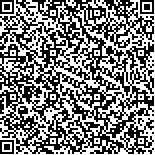下载中心
优秀审稿专家
优秀论文
相关链接
摘要

同一区域、不同时期大量历史数据的积累,以及同一区域能够方便地获取高时间分辨率遥感数据,使遥感时间序列影像变化检测成为近年来遥感技术与应用的研究热点。本文系统总结和评述了当前遥感时间序列影像变化检测的相关研究进展和应用状况,在阐明遥感时间序列分析的意义,以及时间序列影像在变化检测中的优势的基础上,从非遥感领域时间序列变化检测方法出发,针对遥感时间序列影像变化检测的需求,明确和归纳了遥感时间序列变化检测的问题与类型,并对当前最新研究进行了综述,总结了各种方法的优点与不足,重点介绍了基于经验模态分解的遥感时间序列影像异常信息检测方法和基于隐马尔可夫模型的土地利用/覆盖变化检测方法,以期能够为相关研究提供参考。最后总结了该研究领域的发展趋势和存在问题,并对今后的研究工作和未来发展方向进行了展望。
As a result of the increasingly convenient access to high temporal resolution data, and even video remote sensing data, a large amount of historical data have accumulated in recent years. Accordingly, change detection technology using remote sensing time series data has achieved rapid development and has become a hot research field in remote sensing, especially after the successful launch of "GF-4", "Jilin No.1", and Skysat satellites. Thus, change detection research with time series remote sensing data has entered a brand new stage.
This review systematically summarizes the research progress and application of Remote Sensing Series Data Change Detection (RSSDCD). Considering the significance and advantage of applying time series analysis in change detection, we start this work by identifying the time series change detection methods in other fields. Then, according to the requirements of RSSDCD, we divide the methods into two categories:methods for anomaly detection for emergencies and methods for the detection of gradual and constant changes in land use/cover types. This review presents the latest progress and methods for these two types of purposes and presents discussions about their advantages and disadvantages. The remote sensing time series data exhibit the following characteristics:seasonality, instability, locality, multi-scale, time-space autocorrelation, multi-dimension, and huge quantity. This review introduces an anomaly detection method based on empirical mode decomposition and a land use/cover gradual change detection method based on hidden a Markov model. Instances for both approaches are offered as references for related research and application. A conclusion about the latest trends and existing issues in this field is drawn after tracking recent research on RSSDCD. Future works are also discussed.

